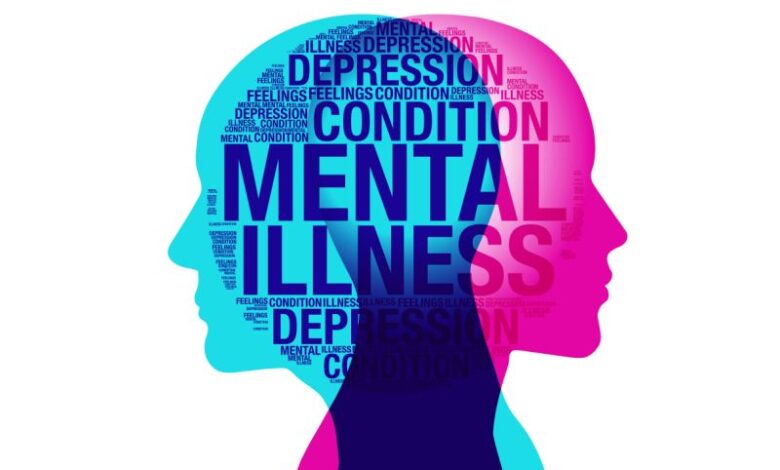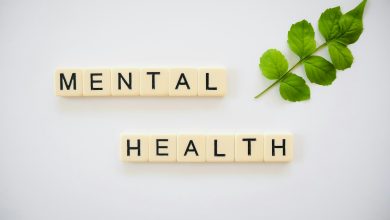What Are The Ten Most Common Mental Disorders?

Mental health is a state of well-being in which an individual realizes his or her own abilities, can cope with the normal stresses of life, can work productively and is able to make a contribution to his or her community. It includes our emotional, psychological, and social well-being. It affects how we think, feel, and act. It also helps determine how we handle stress, relate to others, and make healthy choices.
Mental health is important at every stage of life, from childhood and adolescence through adulthood. 20.6% of U.S. adults experienced mental illness in 2019 (51.5 million people). This represents 1 in 5 adults. 5.2% of U.S. adults experienced serious mental illness in 2019 (13.1 million people). This represents 1 in 20 adults.
Why is mental health important for overall health?
Mental and physical health are equally important components of overall health. Mental illness, especially depression, increases the risk for many types of physical health problems, particularly long-lasting conditions like stroke, type 2 diabetes, and heart disease. Similarly, the presence of chronic conditions can increase the risk for mental illness.
Why is medication important in mental health?
Prescribed medications play a key role in the treatment of co-occurring mental disorders. They can reduce symptoms and prevent relapses of a psychiatric disorder. Medications can also help patients minimize cravings and maintain abstinence from addictive substances.
What are the ten most common mental disorders?
The Diagnostic and Statistical Manual of Mental Disorders, Fifth Edition (DSM-5) helps mental health professionals diagnose mental illnesses. There are many types of mental health disorders. In fact, almost 300 different conditions are listed in DSM-5.
These are some of the most common mental illnesses affecting people in the United States:
Bipolar disorder
Bipolar disorder is a chronic mental illness that affects about 2.6 percent of Americans each year. It is characterized by episodes of energetic, manic highs and extreme, sometimes depressive lows.
These can affect a person’s energy level and ability to think reasonably. Mood swings caused by bipolar disorder are much more severe than the small ups and downs most people experience on a daily basis.
Persistent depressive disorder
Persistent depressive disorder is a chronic type of depression. It is also known as dysthymia. While dysthymic depression isn’t intense, it can interfere with daily life. People with this condition experience symptoms for at least two years. About 1.5 percent of American adults experience dysthymia each year.
Generalized anxiety disorder
Generalized anxiety disorder (GAD) goes beyond regular everyday anxiety, like being nervous before a presentation. It causes a person to become extremely worried about many things, even when there’s little or no reason to worry. Those with GAD may feel very nervous about getting through the day. They may think things won’t ever work in their favor. Sometimes worrying can keep people with GAD from accomplishing everyday tasks and chores. GAD affects about 3 percent of Americans every year.
Major depressive disorder
Major depressive disorder (MDD) causes feelings of extreme sadness or hopelessness that lasts for at least two weeks. This condition is also called also called clinical depression. People with MDD may become so upset about their lives that they think about or try to commit suicide. About 7 percent of Americans experience at least one major depressive episode each year.
Obsessive-compulsive disorder
Obsessive-compulsive disorder (OCD) causes constant and repetitive thoughts, or obsessions. These thoughts happen with unnecessary and unreasonable desires to carry out certain behaviors, or compulsions. Many people with OCD realize that their thoughts and actions are unreasonable, yet they cannot stop them. More than 2 percent of Americans are diagnosed with OCD at some point in their lifetime.
Post-traumatic stress disorder (PTSD)
Post-traumatic stress disorder (PTSD) is a mental illness that’s triggered after experiencing or witnessing a traumatic event. Experiences that can cause PTSD can range from extreme events, like war and national disasters, to verbal or physical abuse. Symptoms of PTSD may include flashbacks or being easily startled. It’s estimated that 3.5 percent of American adults experience PTSD.
Schizophrenia
Schizophrenia impairs a person’s perception of reality and the world around them. It interferes with their connection to other people. It’s a serious condition that needs treatment. They might experience hallucinations, have delusions, and hear voices. These can potentially put them in a dangerous situation if left untreated. It’s estimated that 1 percent of the American population experiences schizophrenia.
Social anxiety disorder
Social anxiety disorder, sometimes called social phobia, causes an extreme fear of social situations. People with social anxiety may become very nervous about being around other people. They may feel like they’re being judged. This can make it hard to meet new people and attend social gatherings. Approximately 15 million adults in the United States experience social anxiety each year.





